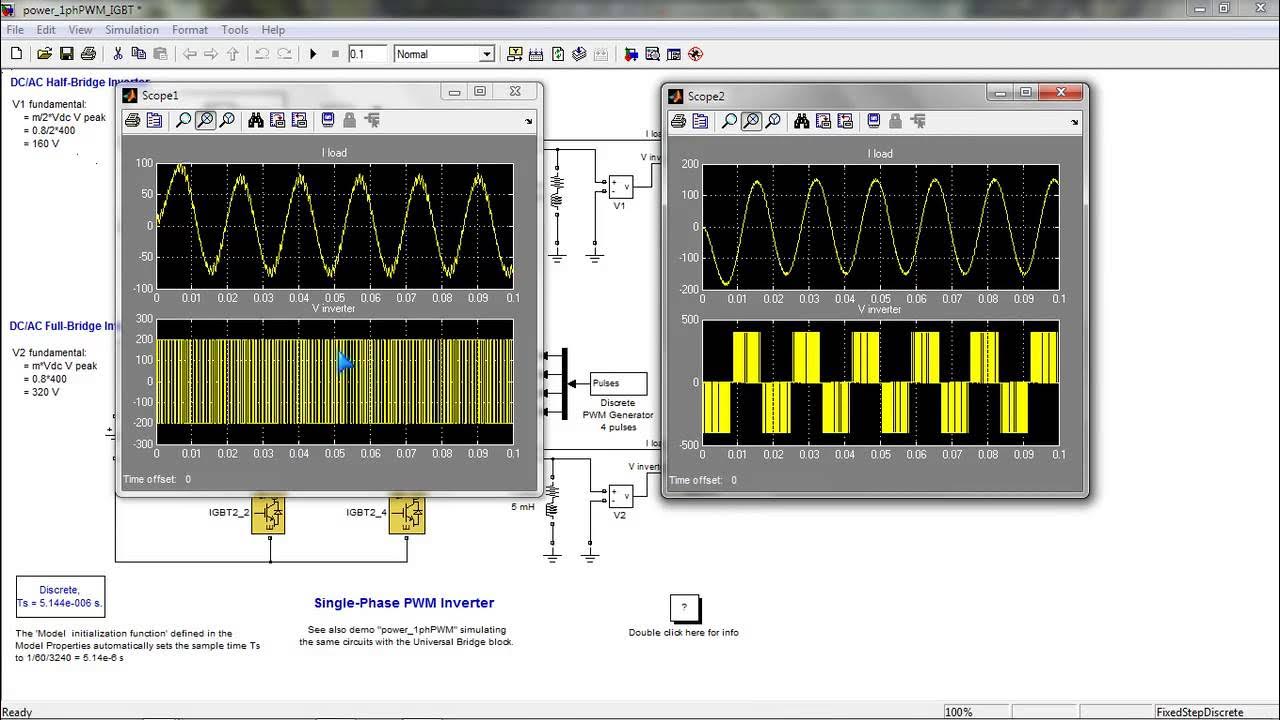Three Phase Rectifiers 1# Half Wave Rectifiers with Resistive Loads
Summary
TLDRThis lecture delves into three-phase half-wave rectifiers with resistive loads, a fundamental rectifier type for three-phase voltage sources. It explains the balanced nature of three-phase sources and how they differ from single-phase rectifiers. The script covers the circuit diagram, phase voltage equations, and the point where phase voltages cross. It also discusses the output voltage ripple and calculates the average output voltage, highlighting the inherent advantage of three-phase rectifiers in providing a smoother output without additional filtering.
Takeaways
- 🔌 The lecture discusses three-phase half-wave rectifiers with resistive loads, which are a type of rectifier for three-phase voltage sources.
- 🌐 A three-phase voltage source is typically balanced, meaning the three voltage signals are separated by a third of a cycle.
- 💡 The reason to use a three-phase rectifier could be to convert a common three-phase AC source to DC voltage for industrial applications.
- 📈 The three-phase half-wave rectifier has one diode per voltage source, making it the simplest type of three-phase rectifier.
- 🔄 The phase voltages are represented by equations: V_a = V_s sin(ωt), V_b = V_s sin(ωt - 2π/3), and V_c = V_s sin(ωt + 2π/3).
- ⚙️ The voltages cross each other at points that are symmetrical and can be calculated to understand when one phase voltage exceeds another.
- 📊 The output voltage of the rectifier is the greatest of any of the three phase voltages at any point in time, resulting in a fluctuating output.
- 🔽 The minimum output voltage occurs where the phase voltages cross each other, which is 0.5 times the peak input voltage (V_s).
- 📉 The output voltage ripple fluctuates every third of a cycle because it's equal to the greatest of the phase voltages at any point in time.
- 📊 The average output voltage can be calculated by integrating the waveform over a period, resulting in approximately 0.82699 times V_s or (3√3/π) times V_s.
- 🔌 Three-phase rectifiers inherently provide a better output voltage with less ripple compared to single-phase rectifiers, even without additional voltage filtering.
Q & A
What is a three-phase half-wave rectifier?
-A three-phase half-wave rectifier is the simplest type of rectifier for a three-phase voltage source. It has one diode per voltage source and is used to convert AC voltage from a three-phase system into DC voltage.
Why might one use a three-phase rectifier?
-One might use a three-phase rectifier in industrial applications where three-phase sources are common but a DC voltage is needed. It allows the creation of DC voltage from a three-phase AC source.
What is a balanced three-phase voltage source?
-A balanced three-phase voltage source is one where the three-phase voltage signals are a third apart from each other every period. This means that the voltages are equally separated from each other.
How are the phase voltages represented in a three-phase system?
-In a three-phase system, the phase voltages are represented as VA = Vs * sin(ωt), VB = Vs * sin(ωt - 2π/3), and VC = Vs * sin(ωt + 2π/3), where Vs is the peak voltage and ω is the angular frequency.
What is the significance of the point where the phase voltages cross?
-The point where the phase voltages cross is significant because it indicates where the voltage of one phase equals another, which affects which diode is forward-biased and thus which phase voltage is present at the output.
How is the voltage at the point where the phase voltages cross calculated?
-The voltage at the point where the phase voltages cross is calculated by setting the equations for two phase voltages equal to each other and solving for the angular frequency ωt. For example, setting VA equal to VC and solving for ωt gives ωt = π/6.
What is the voltage at which the three phase waveforms cross each other?
-The voltage at which the three phase waveforms cross each other is 0.5 Vs, where Vs is the peak of the three-phase input voltages.
How does the output voltage of a three-phase half-wave rectifier behave?
-The output voltage of a three-phase half-wave rectifier is equal to the greatest of any of the three phase voltages at any point in time, which results in a fluctuating output voltage that is equal to the peak of the voltage sources when they are greater than the others.
What is the output voltage ripple for a three-phase half-wave rectifier?
-The output voltage ripple for a three-phase half-wave rectifier fluctuates every third of a cycle and ranges from the peak of the voltage sources (Vs) to the voltage at which the phase voltages cross each other (0.5 Vs).
How is the average output voltage of a three-phase half-wave rectifier calculated?
-The average output voltage is calculated by taking the integral of the output voltage waveform over one period and dividing by the period. The result is approximately 0.82699 Vs or 3 * √3 / 2π * Vs.
Why does the three-phase rectifier provide a better output voltage without filtering compared to a single-phase rectifier?
-The three-phase rectifier inherently provides a better output voltage without filtering because it uses a three-phase voltage source, which results in a smoother output voltage waveform with less ripple compared to a single-phase rectifier.
Outlines

This section is available to paid users only. Please upgrade to access this part.
Upgrade NowMindmap

This section is available to paid users only. Please upgrade to access this part.
Upgrade NowKeywords

This section is available to paid users only. Please upgrade to access this part.
Upgrade NowHighlights

This section is available to paid users only. Please upgrade to access this part.
Upgrade NowTranscripts

This section is available to paid users only. Please upgrade to access this part.
Upgrade NowBrowse More Related Video
5.0 / 5 (0 votes)





